Since the Smoky Mountains, I would frequently run into two brothers thru hiking north. I found them to be stand up guys in their approach to their hike and I enjoyed their company. At Harpers Ferry, I was surprised to learn that the younger brother was getting off trail because he was not finding opportunities to “give back”. I often think what a terribly sad day that must have been for both brothers, one heading home on the Amtrak, the other heading out on the trail alone. I would later learn that the younger brother was joining the military.
Clearly, if you are looking to give back, a thru hike is not the place. On the contrary, thru hiking is a relatively selfish endeavor requiring everyone else to make sacrifices for you, especially your family.
Most people are very kind to thru hikers. I remember one day heading up the trail from Newfound Gap in the Smokies on a cold, rainy day. A guy coming down the trail said to me, “Do you have everything you need?” Somewhat taken aback, I answered, “Huh? Yeah, I’m good.” to which he replied, “If not, I have lots of stuff in my truck down in the parking lot.” I was just not accustomed to such kindness from a total stranger. It took me a while to get adjusted to the idea that when people offered help or gifts, they did so out of the goodness of their hearts, and were happy for you to accept their assistance.
All this brings me to the subject of gratitude. I am most grateful to my family who have supported my endeavor from the get-go. Not only have they picked up the slack for me at home, they have traveled many miles to visit me and even hike with me on the trail.
Out on the trail, I am most grateful for the gifts of nature which provide continuous inspiration. A couple of those “gifts” are the squirrels and chipmunks who have provided entertainment all along the trail.

Gray Squirrel enjoying a nut

Red Squirrel nibbling on an evergreen cone

Chipmunk
One of my favorite TED Talks, given by a monk, is on the subject of gratefulness. If interested, you can find the full talk here, but I will try to summarize. First, he argues that people are happy because they are grateful, and not the other way around. Secondly, he advises that we should “Stop, Look, and Go.” Slow down our lives to observe those things for which you are thankful, then take action to improve our lot.
When I watched this talk the other day to see if it still resonated, I found it to be very relevant to the trail. Two examples of people taking action are the “trail angels” and the folks doing trail maintenance.
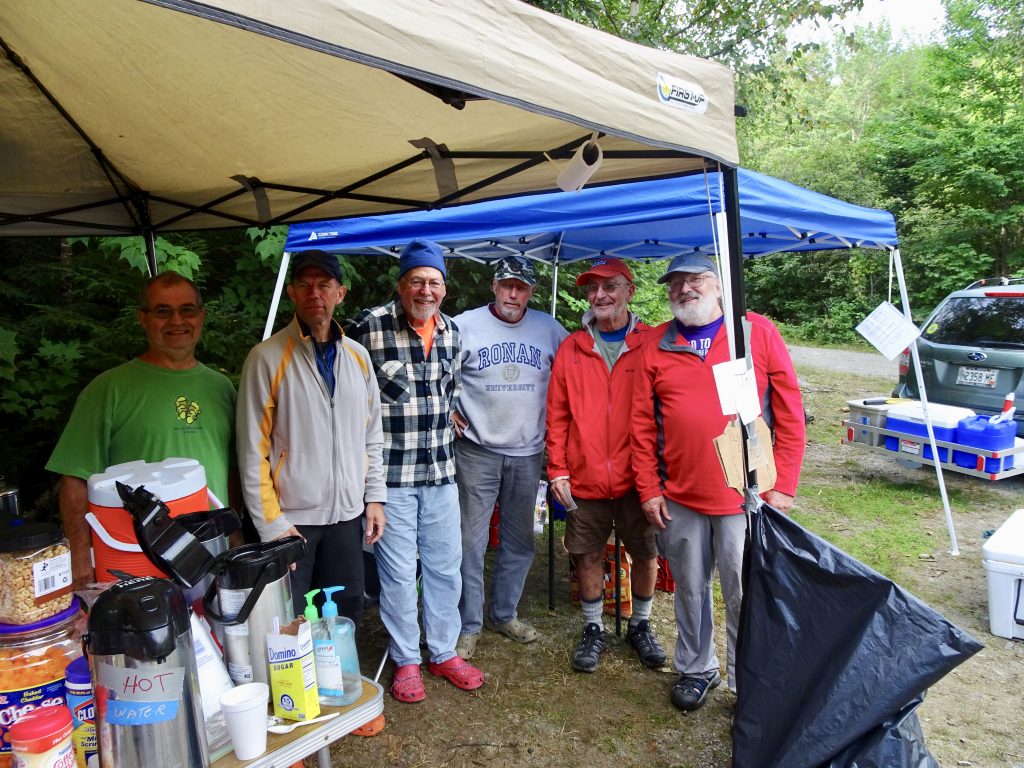
Maine Trail Angels, passing out the magic
Trail angels are people that provide “trail magic” to hikers. Sometimes they come in the form of organized groups like hiking clubs or church ministries, but often they are one or a handful of individuals. Occasionally, the trail magic is anonymous, like a cooler of drinks or box of donuts left along the trail. Motivations to be a trail angel vary. For some, it is a fun outing with their group. For others, it is a way to stay connected with the trail community. The common denominator is that it brings them satisfaction. Here is just a small sampling of the trail angels and trail magic I have encountered on the trail.
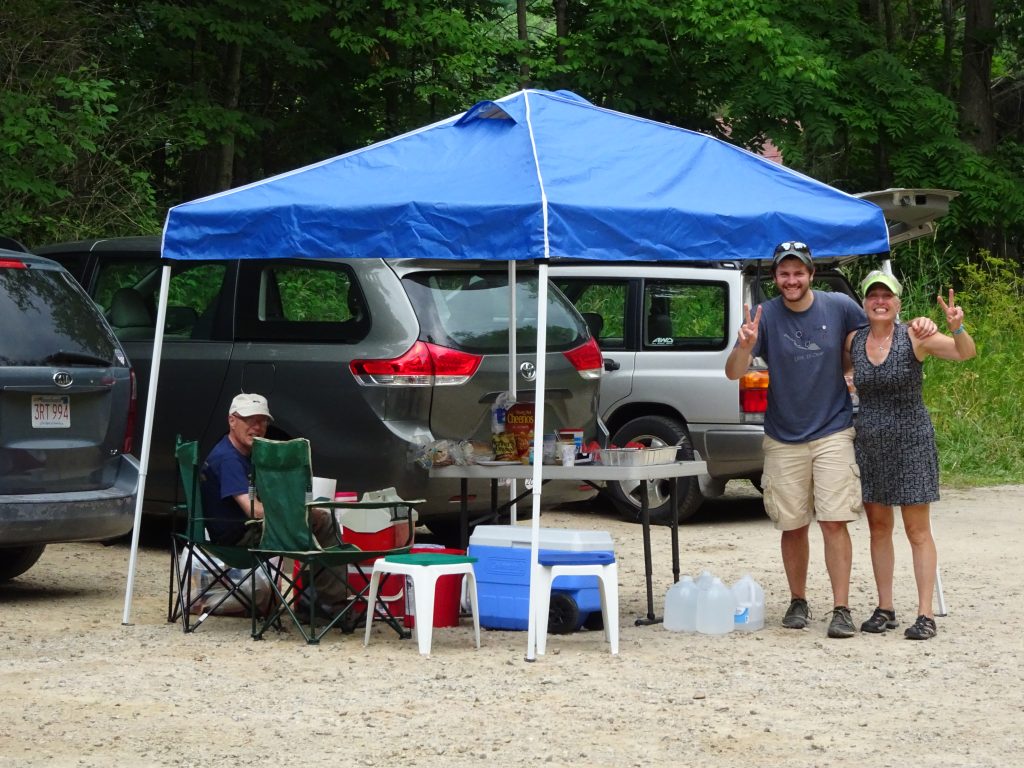
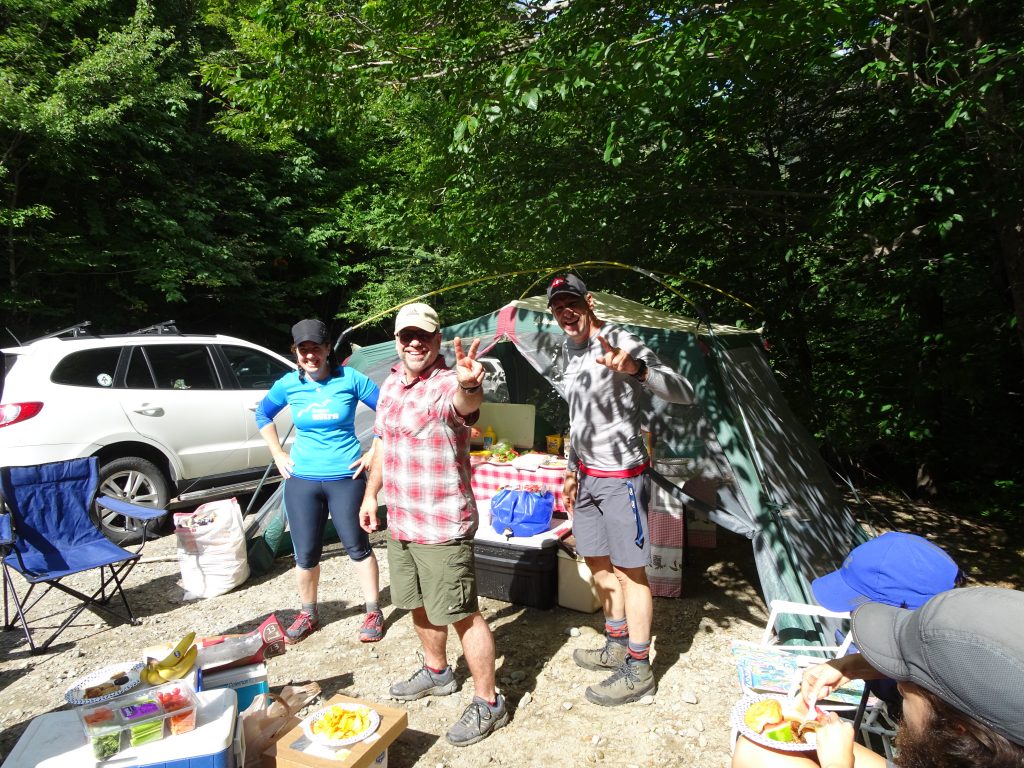
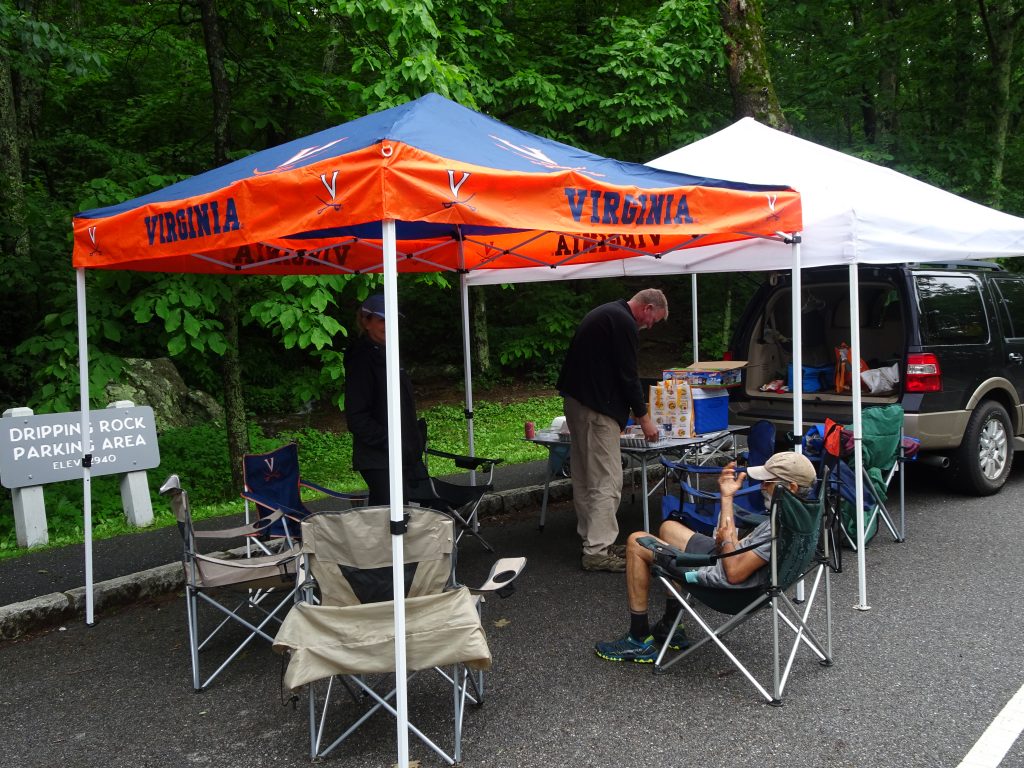
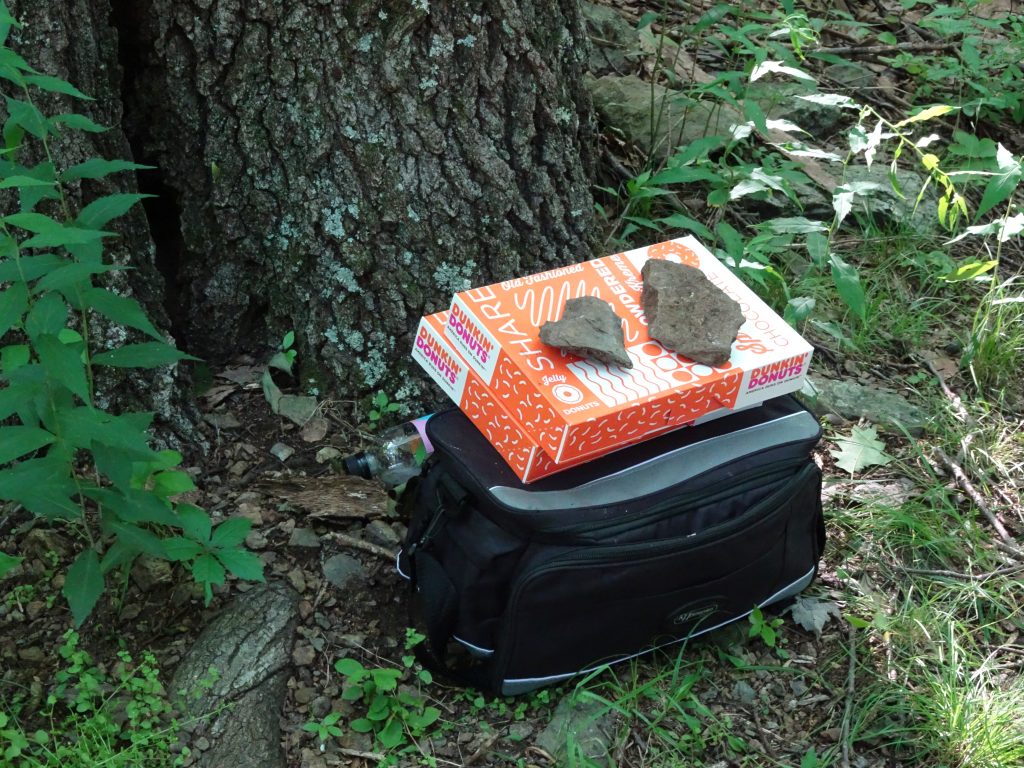
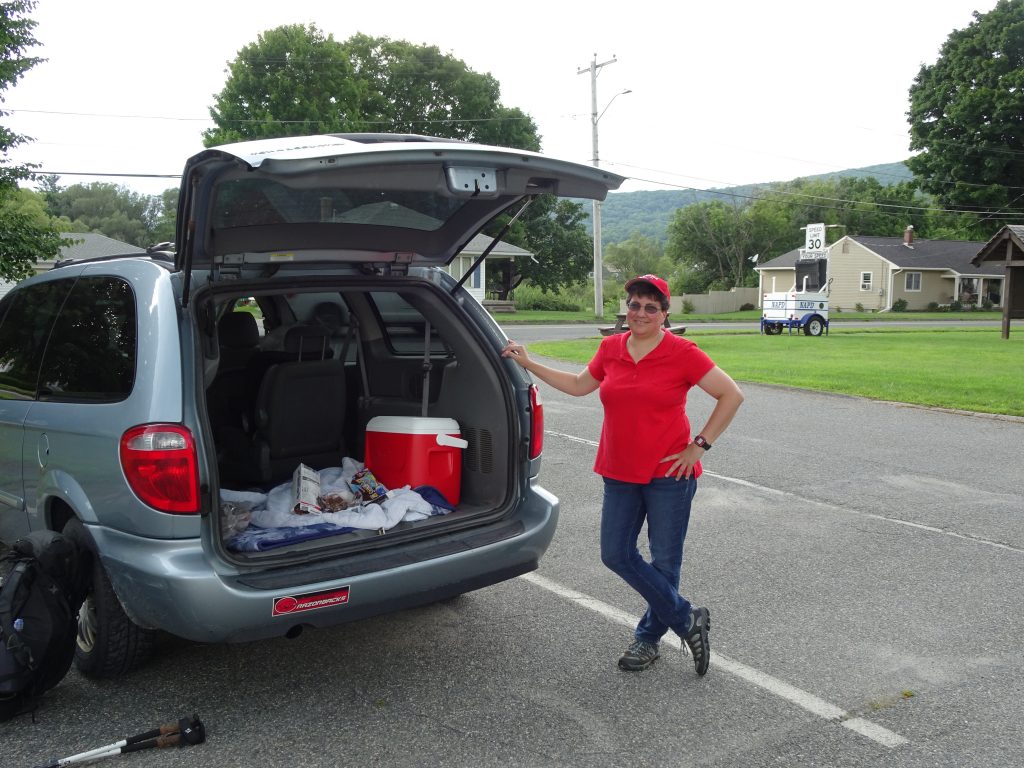
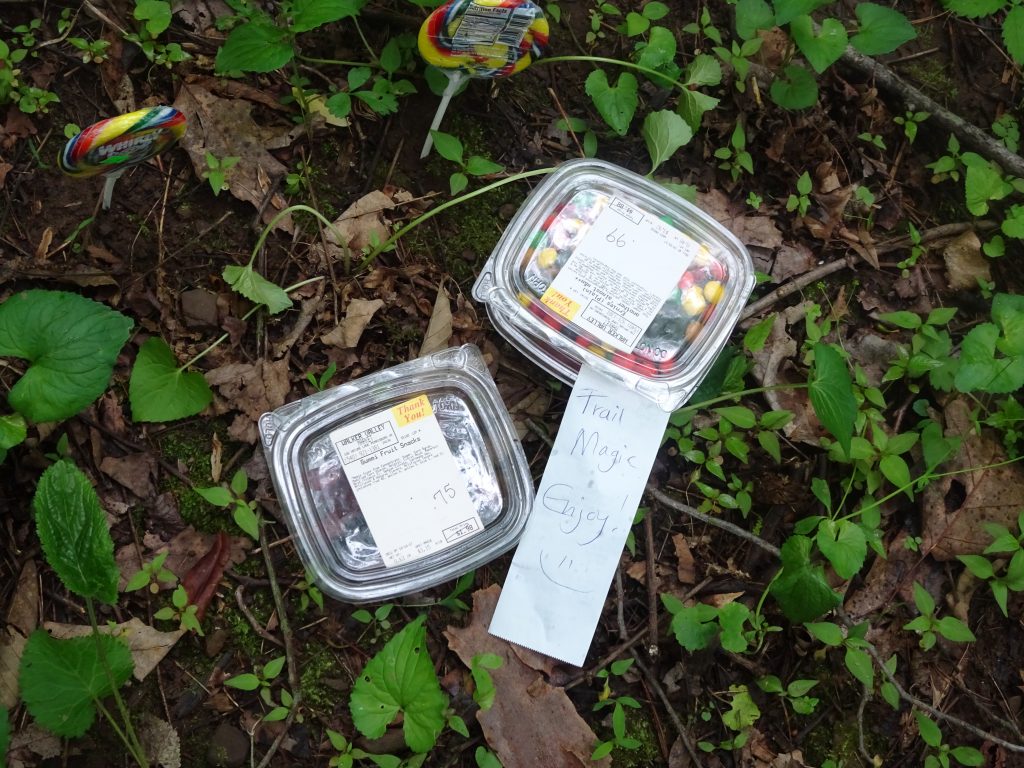
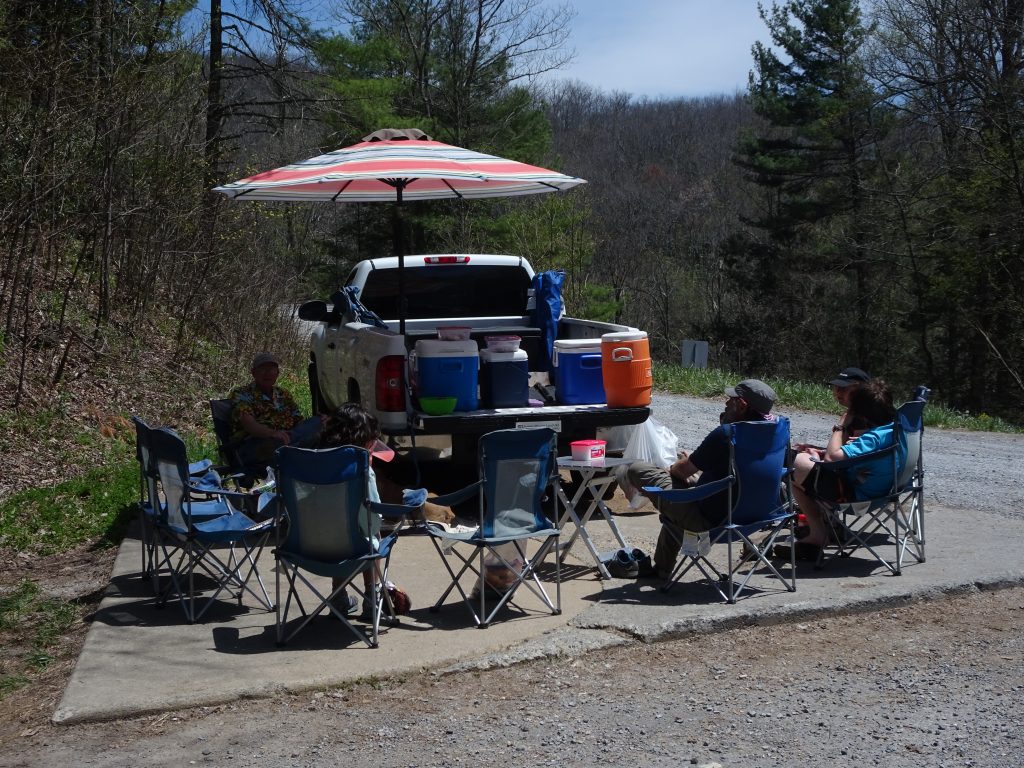

I am also grateful for the countless volunteers that work to maintain and improve the Appalachian Trail. The maintenance of over 2000 miles of trail is a gargantuan task. I find it amazing how a collection of regional hiking clubs, loosely coordinated by the ATC, are getting the job done. It is an example of how many, many people taking action and doing their part, can make miracles happen.
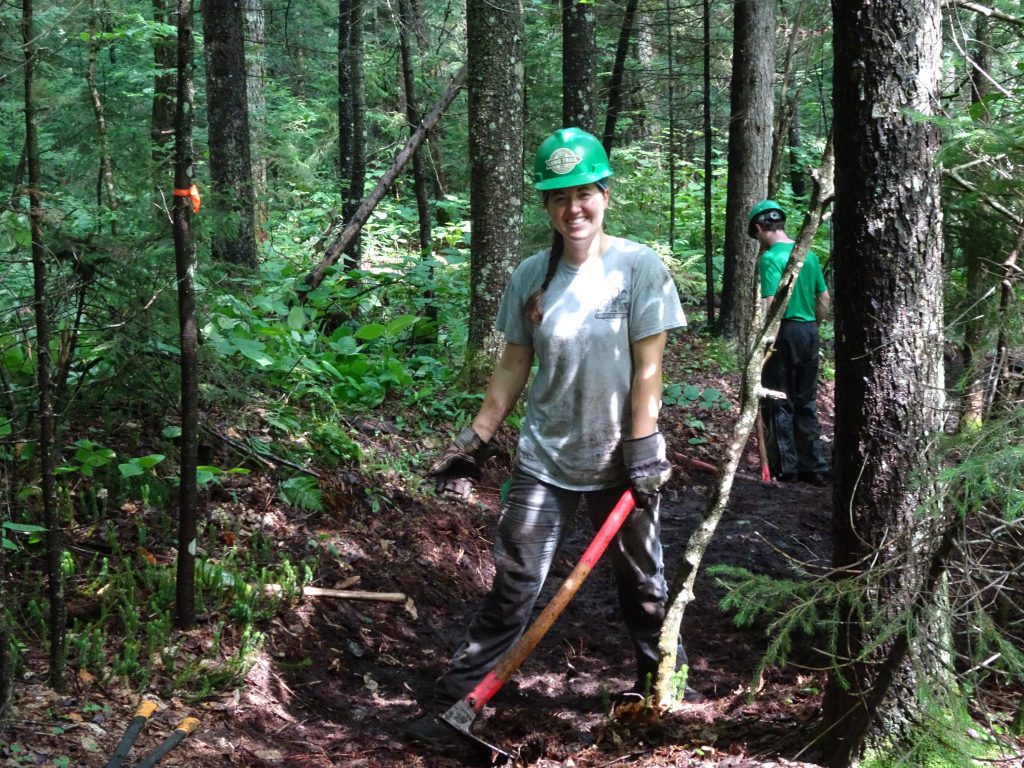
Maintaining the trail in Vermont
There is some trail maintenance that is a walk in the park. Literally. I met three senior citizen women in Shenandoah with rakes and shovels slung over their shoulders, walking the trail and clearing debris from the water dams. Much of the trail work, however, is hard physical labor. For starters, the workers must cart their tools (crowbars, shovels, pickaxes, etc.) miles down the trail to the work location. The most serious trail work entails digging rocks out of the mountainside, then carrying, levering, or dragging them into position on the trail, sometimes using come-alongs or portable cranes. One trail worker described the job as “groveling in the mud”. Based on the appearance of their work clothes, that sounded about right.
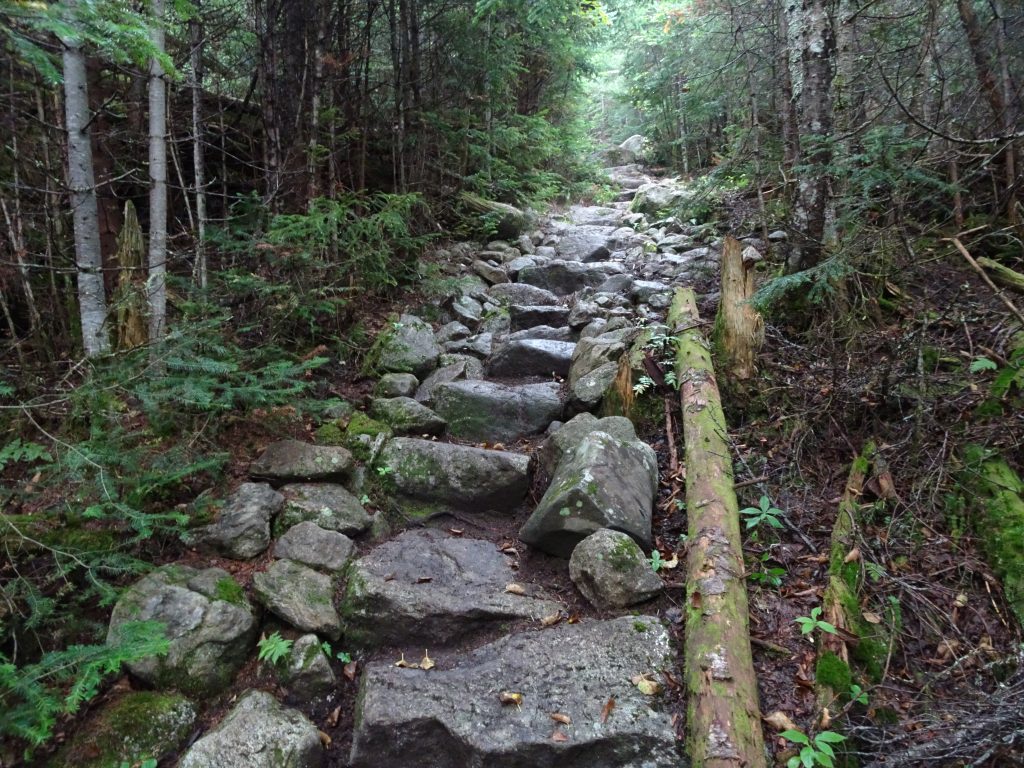
Stone steps to help with the climbs
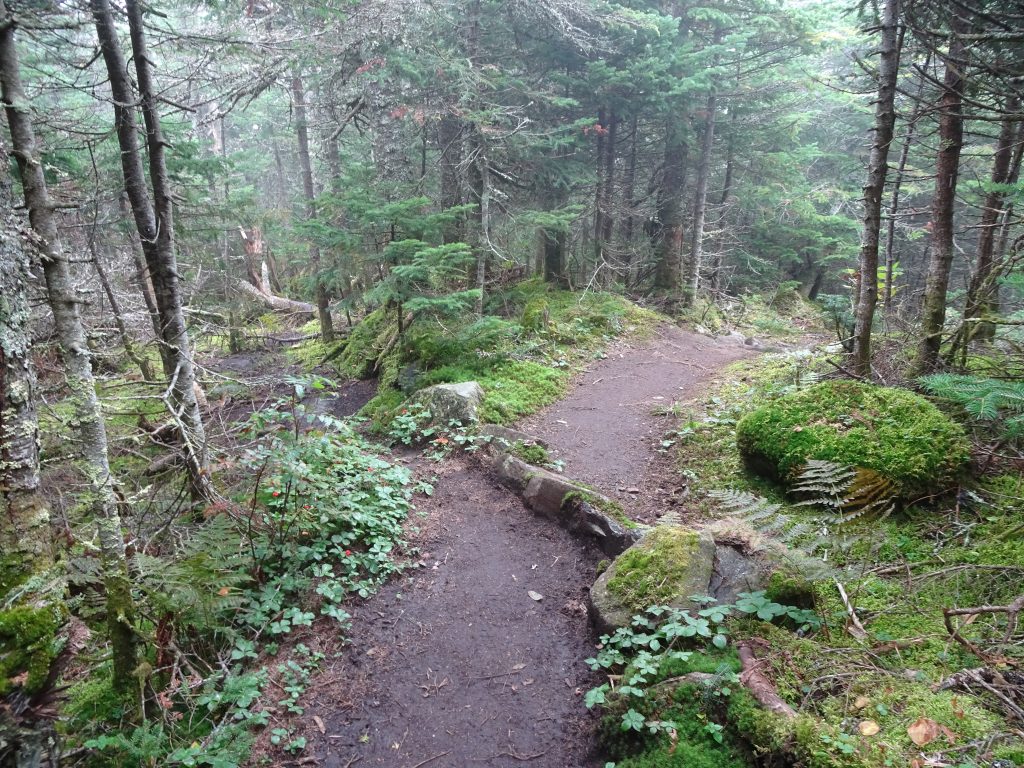
“Water Dam” to prevent soil erosion
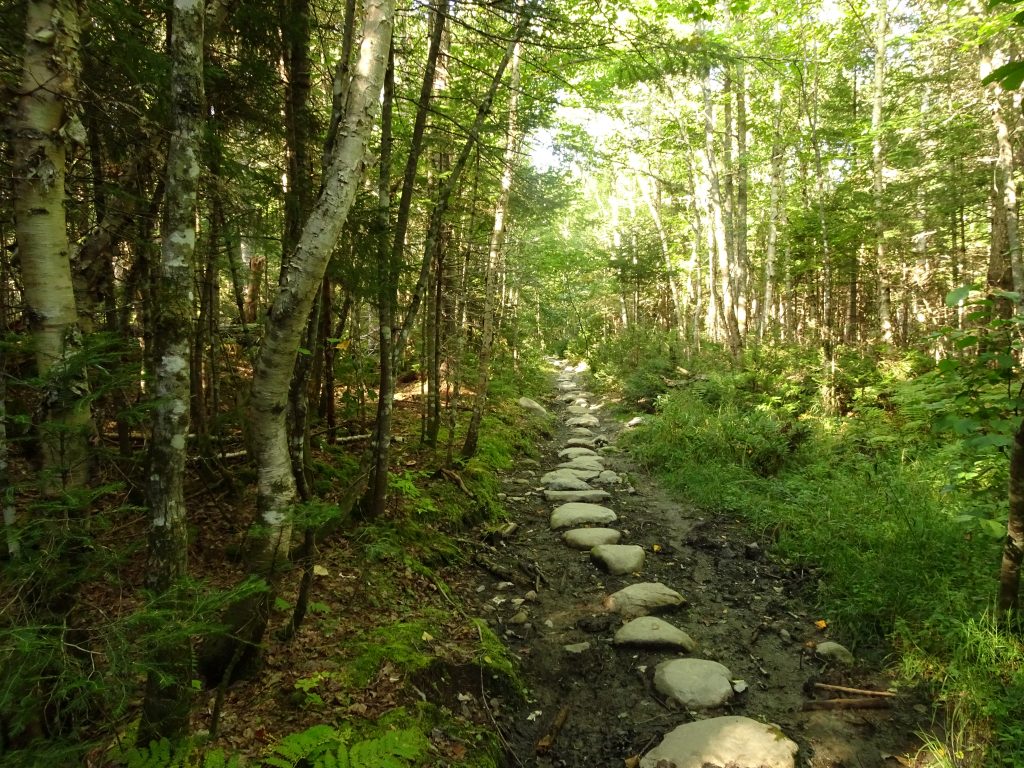
Stepping stones to avoid the mud
If you don’t think trail-building is hard work, have a look at these two guys. The one on the right is the crew leader, who obviously leads by example.
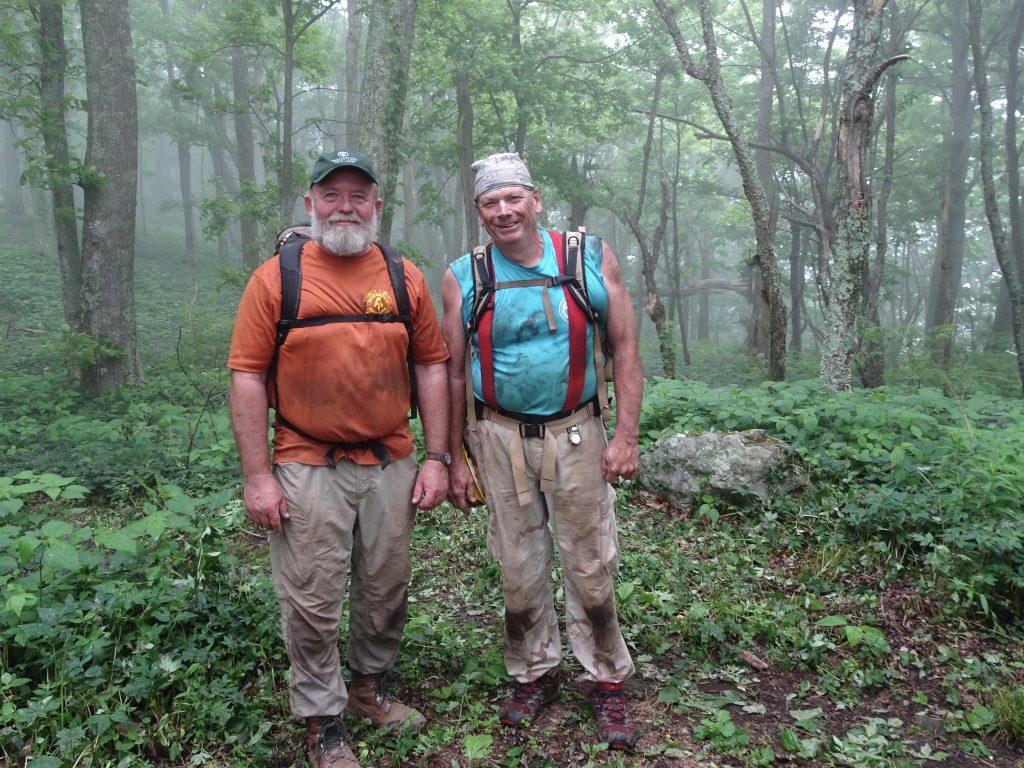
“Groveling in the mud”, as they put it
Many of the volunteer trail workers are senior citizens. When you talk to them, they usually make some self-deprecating comment like, “It gets me out of the house.” or “It’s an excuse to get out in the woods.” Here are some other trail workers in action.
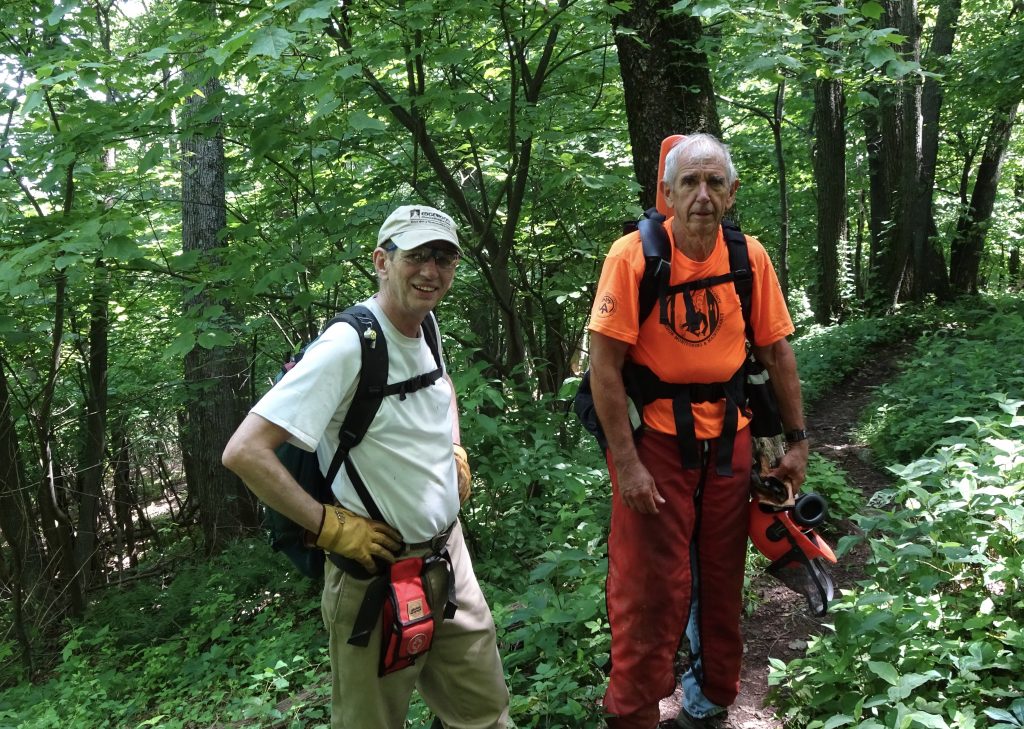
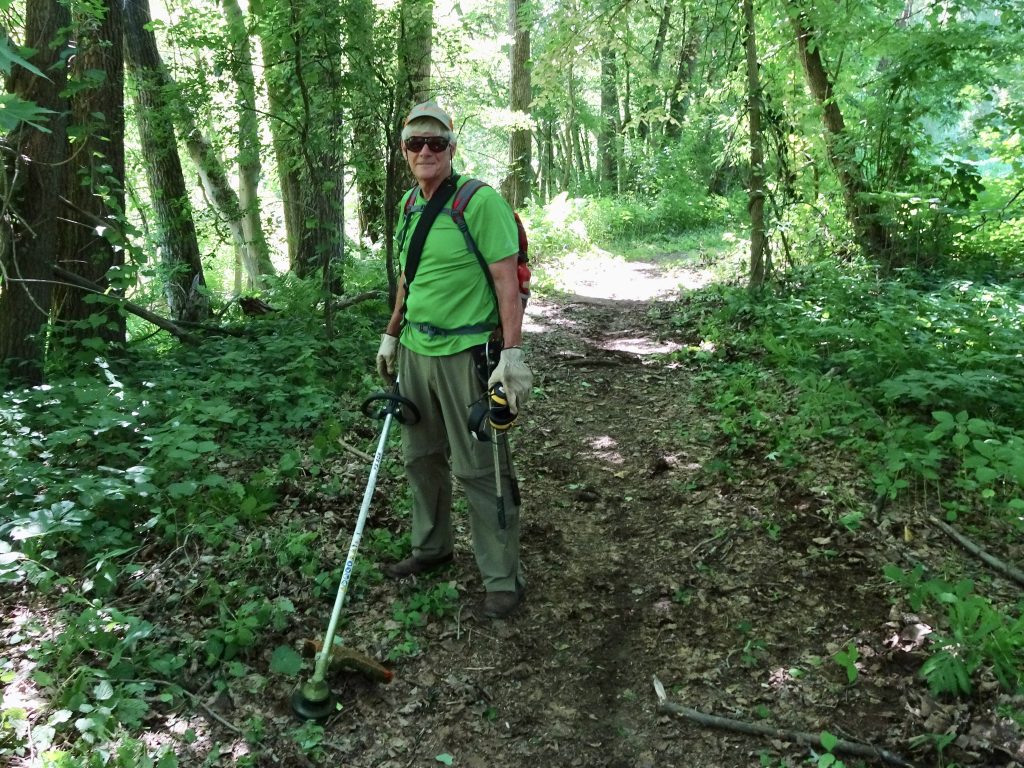
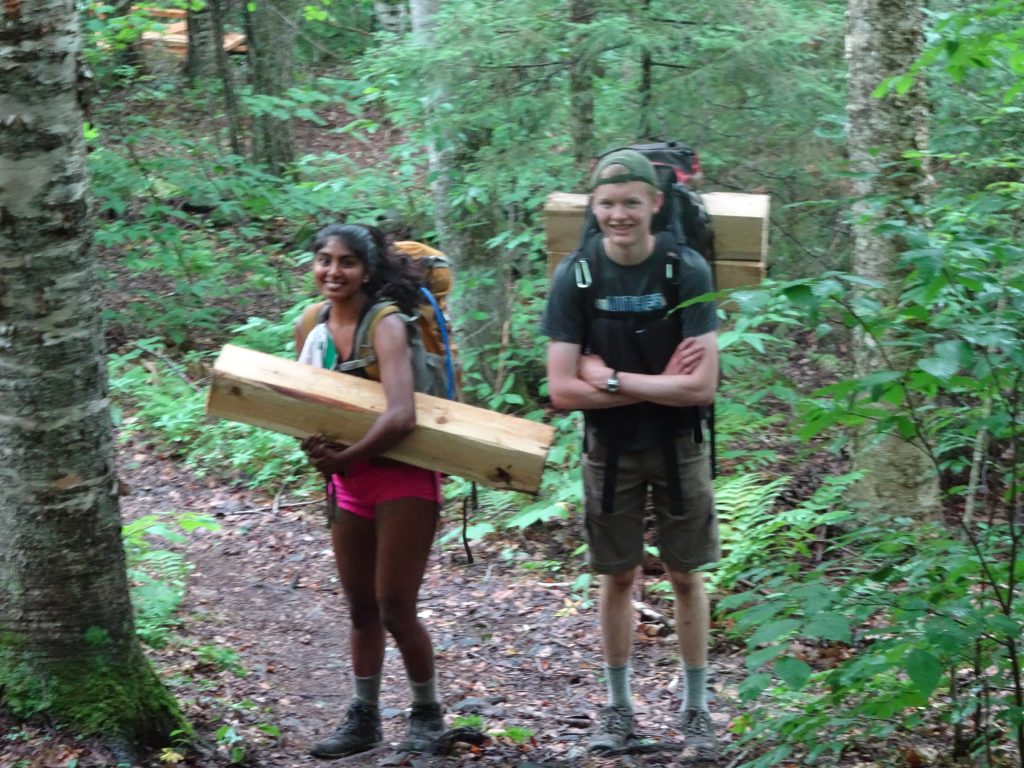
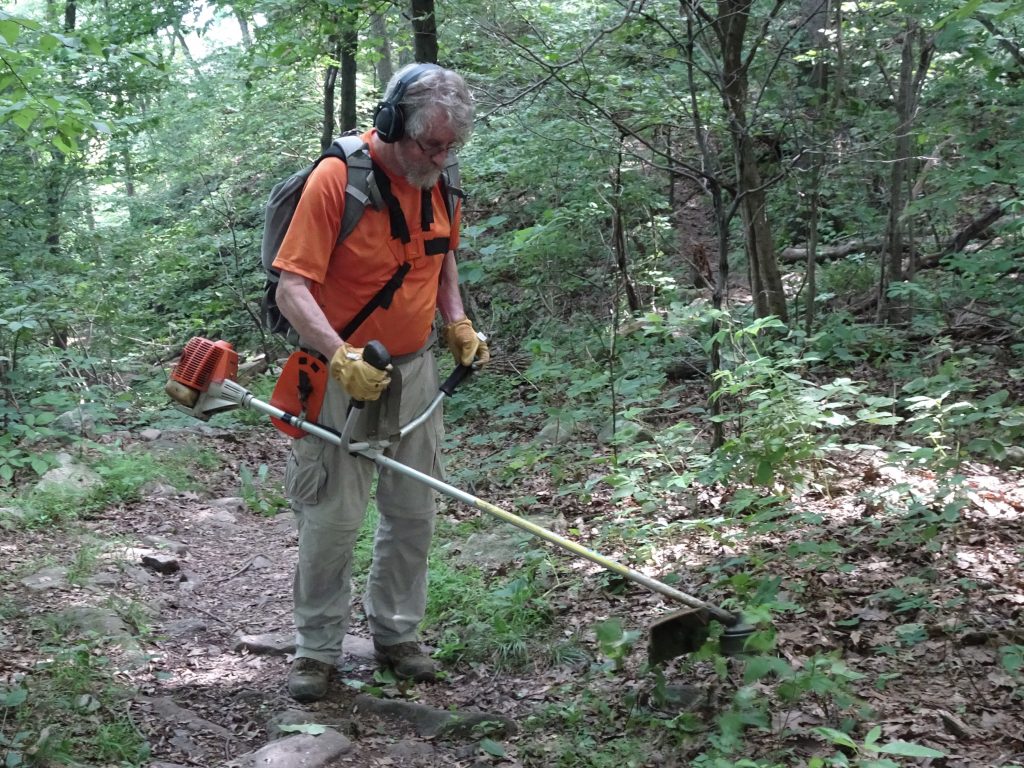
I benefitted from the accomplishments of many, many Eagle Scout projects along the trail, for which I am thankful. These would be identified by plaques in bridges, walkways, and other structures.
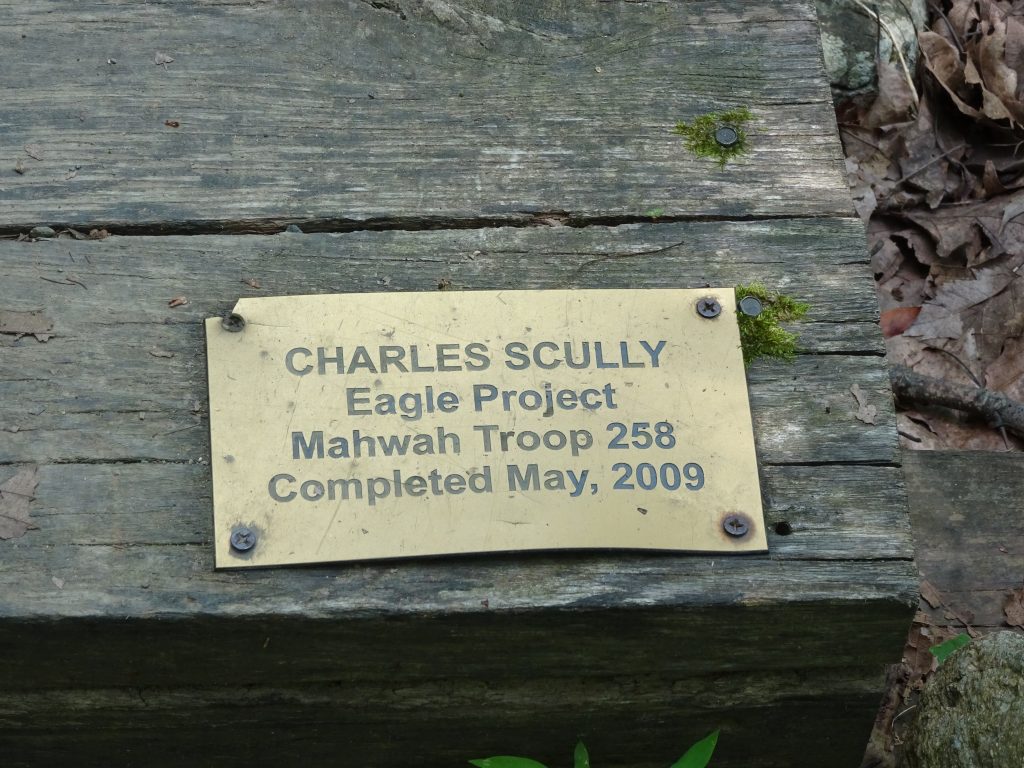
Plaque for an Eagle Scout project
The idea of “Stop-Look-Go” also seems applicable to process of thru hiking. Stop – Slow down and don’t become fixated on just “making miles”. Look – Observe all the wonders of nature along the trail, as well as the experiencing the towns. Go – Put on your pack and get moving.
On the subject of “getting moving”, I thank my brother-in-law, Phil, for introducing me to a series of books by C. S. Forester known as the Hornblower saga. The books detail the exploits of a fictional early 19th-century seaman named Horatio Hornblower as he works his way up from midshipmen to fleet admiral. He succeeds through ingenuity and daring, but also through preparedness and taking action. If the wind was not blowing, Hornblower would be busy readying his ship to sail. When the wind blew, he would set sail without delay. Figuratively speaking, I have tried, (not always successfully), to apply this idea in my personal and work life. On the trail, when it is rainy, I get packed up and ready to go. When the rain lets up, I get rolling.
I was not always grateful for the rain and fog, especially in May, which was one of the wettest on record in Virginia. However, it did provide more plentiful water sources, and those foggy mornings would showcase the spider webs. Here is my spider web gallery.
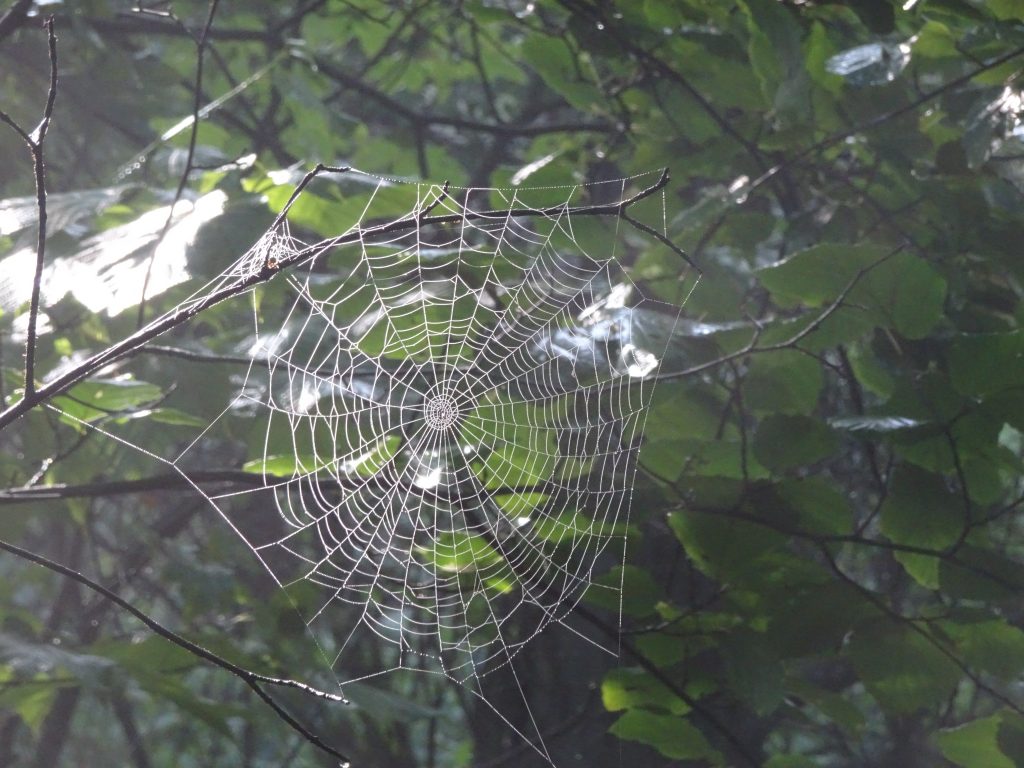
The Traditional
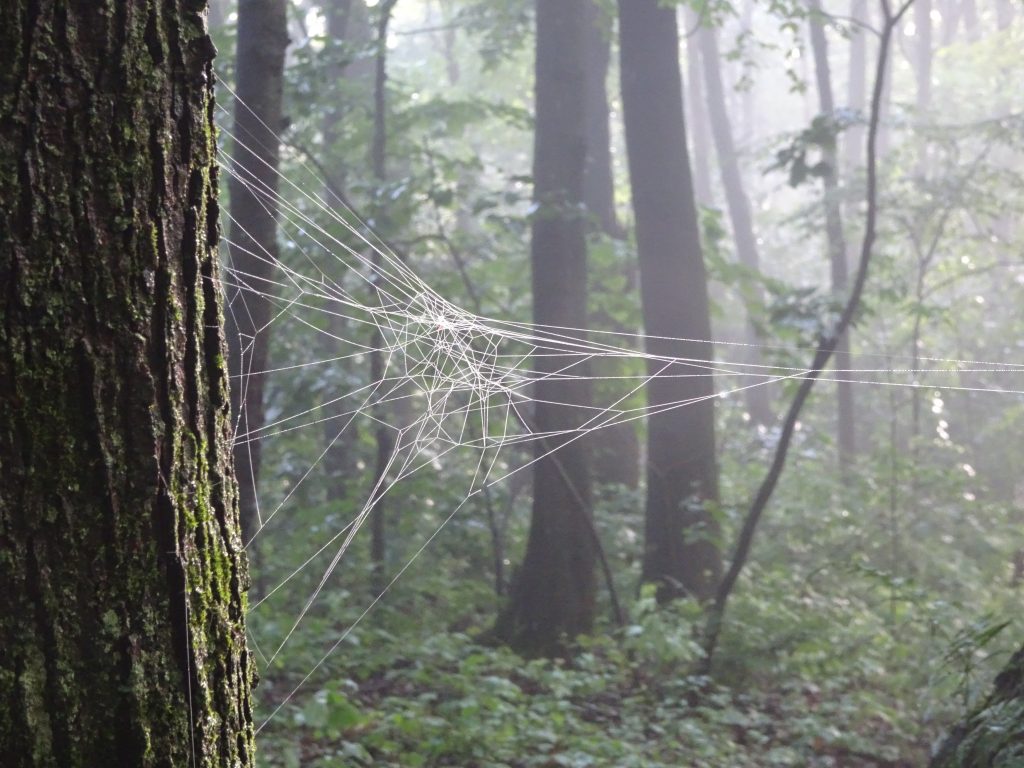
The Abstract

The Blob

The Hammock
I have gone by the trail name “Bilbo” since the early part of my hike and I feel like it has served me well. It is relatively easy to remember as most people have heard of The Hobbit. Most other hikers don’t grasp the symbolism, that is, of Bilbo being the mild mannered, respectable hobbit engaged in a grand adventure, but that’s okay. Occasionally it will “click” with someone. I met one woman who claimed to have read The Hobbit and Lord of the Rings some 15 times. She said she would think about Bilbo almost every day when she encountered some challenge on the trail. One day I introduced myself to another hiker who, back home, was a truck driver from Baltimore. This guy, who looked anything but the bookish type, said The Hobbit was the first book that he ever read that turned him into a reader. That, I would say, is high praise indeed for J. R. R. Tolkien.
I have yet to meet him, but there is another thru hiker on the trail going by the trail name “Bombadil”, based on the character Tom Bombadil from Lord of the Rings. This character was left out of the movie, which some folks were very unhappy about. From what I have heard, hiker Bombadil complains bitterly about this to anyone who will listen.
Some flora and fauna from the trail…

Goldenrod
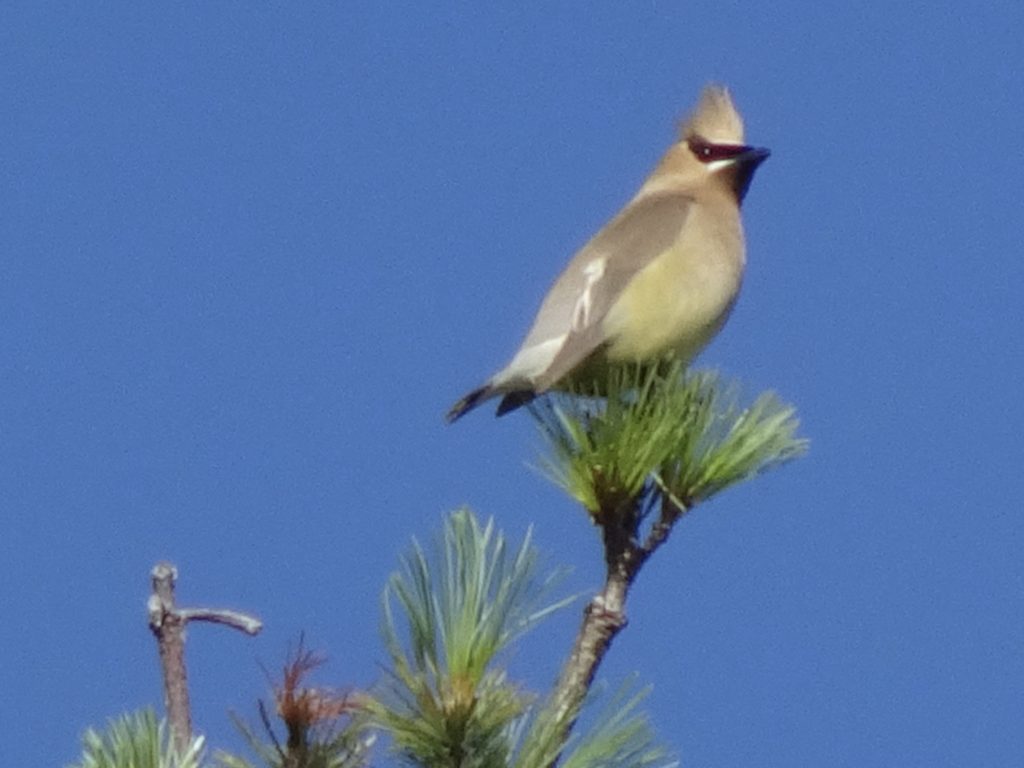
Cedar Waxwing

Eastern Comma Butterfly
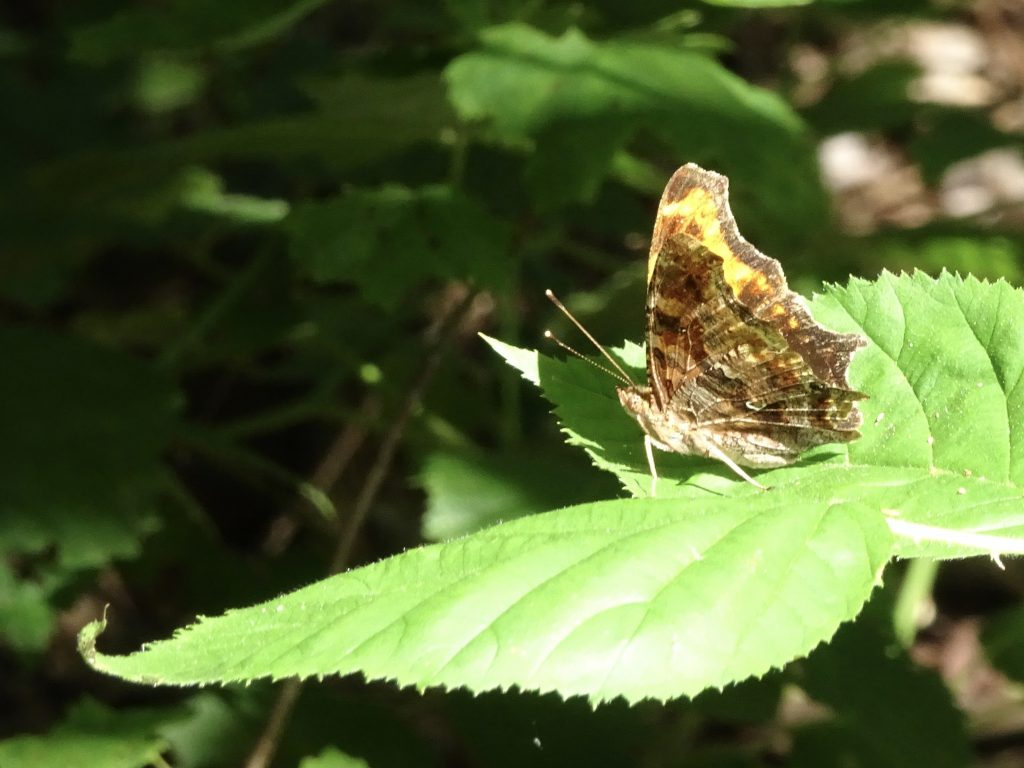
Eastern Comma Butterfly (Underside)
If you’d like to receive an email when a new post is up on the blog, click the email icon on the bottom of the page to subscribe. Thanks for following!

Reading your blog was quite enjoyable and I’m very happy you were able to complete it safely.